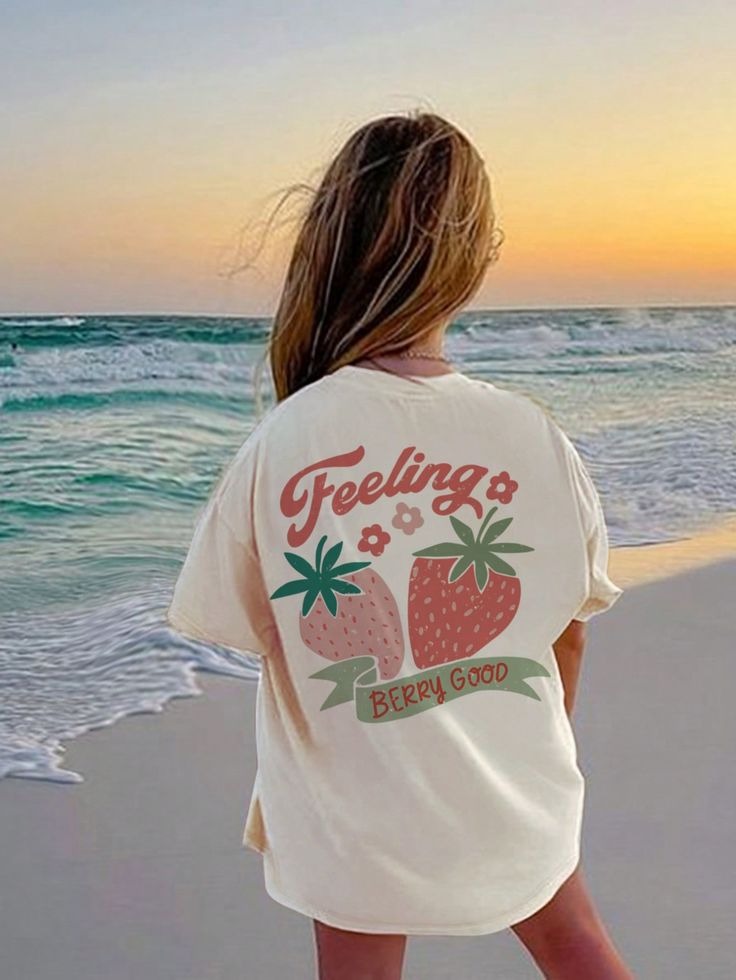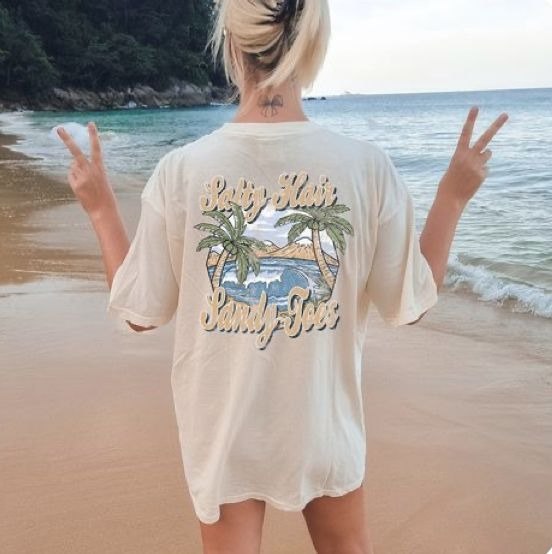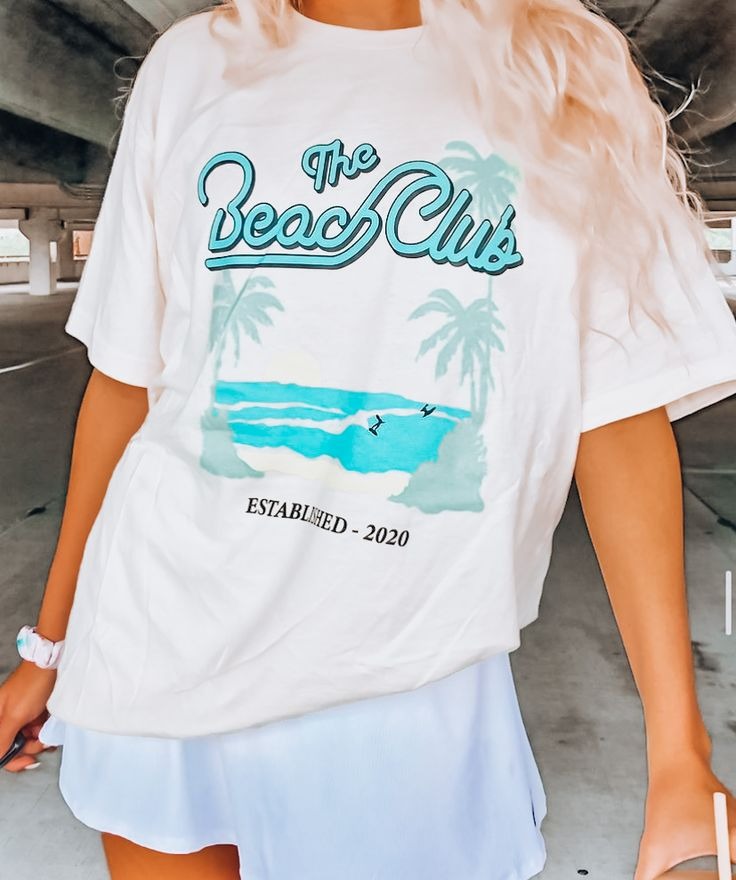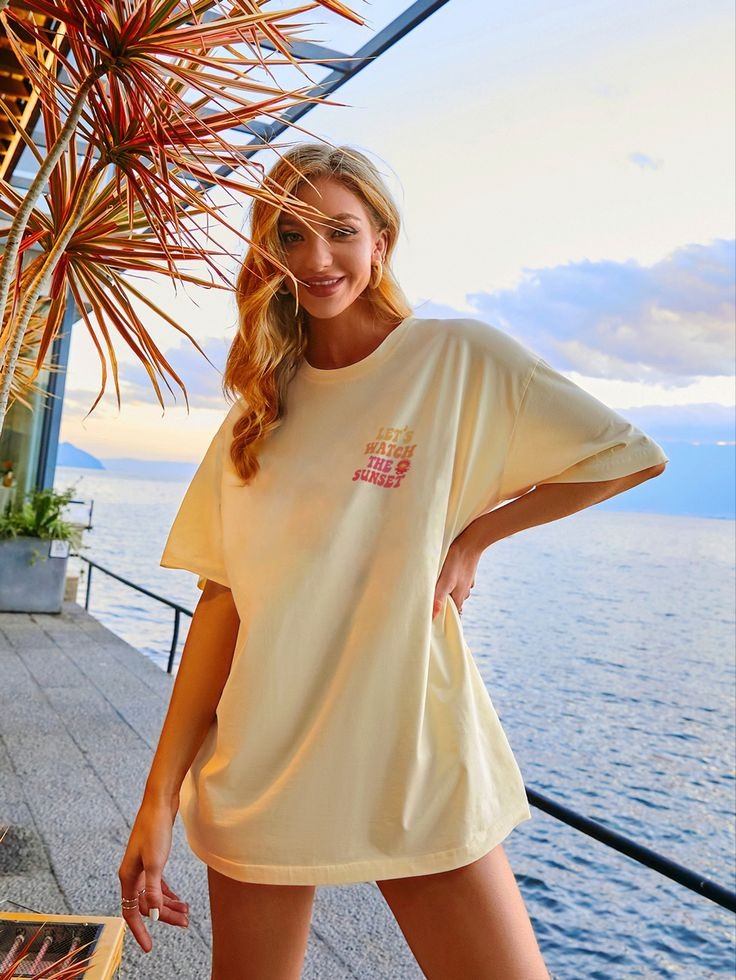No products in the cart.: 0,00$
T-Shirts: A Monumental Weave of Heritage, Innovation, and Influence

Introduction
Few garments possess the paradoxical simplicity and depth of the T-shirt. A mere assembly of two sleeves, a central body panel, and a neckline, it nevertheless serves as a dynamic interface between function and fashion, personal identity and collective movement, industrial achievement and environmental responsibility. From humble utility to high fashion, from grass-roots protest to virtual embodiment, the T-shirt has traversed continents, cultures, and centuries, accruing stories and technologies at every stitch. In this panoramic exploration, we delve further than ever into the T-shirt’s multivalent journey—uncovering obscure historical anecdotes, unpacking supply-chain complexities, illuminating landmark creative collaborations, scrutinizing the minutiae of material science, and charting ambitious trajectories for a garment poised to redefine itself in a circular, bio-digital future.
Historical Foundations: The Quiet Genesis of a Cultural Staple
The lineage of the modern T-shirt begins in the mid-nineteenth century, when seafaring nations and burgeoning industrial economies sought practical alternatives to the layered cotton and linen shirts of the Victorian era. Textile innovators on both sides of the Atlantic experimented with single-jersey knit constructions—lightweight, breathable panels that draped freely over the body. Sailors on wooden decks and laborers in dank factories prized these knits for their rapid drying, ease of laundering, and freedom of movement.
Despite their advantages, these early one-piece garments remained hidden beneath heavier tunics and overalls well into the twentieth century. It was only with the urgency of two global conflicts that the undershirt stepped into the spotlight. During World War I, shortages of traditional uniforms led some armies to issue cotton jerseys as interim attire in training camps, but the shirts stayed largely out of civilian view. World War II, by contrast, placed them on the world stage. In the sweltering heat of Pacific atolls and North African deserts, the regulation cotton undershirt proved indispensable. As veterans returned home, they brought with them not only memories but also a preference for comfort. Surplus military stock was cut, hemmed, and patched into everyday shirts; patterns and logos were hand-painted for family gatherings and garage dances. Hollywood seized upon this casual new silhouette. On silver screens across America, figures like Marlon Brando and James Dean embodied youth and rebellion in plain white tees, forever altering the public imagination and elevating the once-hidden underlayer into an outerwear icon.
Materials and Manufacturing: Unraveling the Science of Softness
The T-shirt’s material evolution reads like a chronicle of textile ingenuity. Early military and work-wear shirts employed loosely spun ring-frame cotton yarns, prized for breathability but prone to pilling and dimension loss. In the 1950s, ring-spun cotton arrived on the scene, twisting fibers for greater strength and smoother touch. This advance extended the garment’s lifespan and made mass-market production more reliable.
With the fitness booms of the 1970s and ’80s, synthetic fibers entered the blend. Polyester and nylon contributed moisture-wicking, rapid-drying, and wrinkle-resistant properties. The introduction of spandex in the 1990s gave T-shirts four-way stretch, enabling form-fitting athletic cuts and recovery after repeated movement. Chemical finishes—hydrophilic coatings, antimicrobial treatments, and UV-block additives—pushed the envelope further, blending performance wear with everyday basics.
The past two decades have seen an upheaval of environmental and circular-economy considerations. Regenerated cellulosic fibers such as lyocell, modal, and bamboo viscose offer soft, breathable alternatives to cotton, though their solvent-based processing demands robust closed-loop recovery. Recycled polyester, spun from post-consumer plastic bottles, diverts mountains of waste from landfills, yet microplastic shedding in laundering remains a concern, spurring research into fiber bonding and novel polymer treatments. Emerging bio-fabrics—derived from agricultural byproducts like pineapple leaves and coffee husks—point toward future blends where waste becomes yarn, and every T-shirt carries within it the story of multiple harvests.
Parallel to fiber innovation, manufacturing processes have transformed. Three-dimensional knitting machines can now fabricate whole T-shirts to shape, eliminating cut-and-sew scraps. Waterless dyeing methods using supercritical carbon dioxide reduce water consumption by as much as ninety-five percent and produce no liquid effluent. Digital direct-to-garment printing bypasses the multi-step silkscreen process, enabling on-demand, full-color, high-resolution imagery without extensive chemical baths. Together, these breakthroughs reconfigure apparel production from linear to regenerative, from stockpiled inventory to responsive micro-batches.
Cultural Resonance: Threads of Protest, Plateaus of Prestige, and Pixels of the Virtual
The T-shirt’s role as a cultural articulator is unparalleled. In the 1960s and ’70s, protest movements empowered participants to literally wear their convictions. Anti-war slogans, civil-rights imagery, and environmental mantras traveled with demonstrators, uniting diverse constituencies through a common visual language. Because screen-printing required minimal capital and could be executed in local print shops, organizations large and small embraced the T-shirt as a low-cost, high-impact medium of mass communication.
Simultaneously, commercial fashion harnessed this expressive power. High-end labels began emblazoning their logos across chests in the 1980s, turning the once-anonymous tee into a billboard for status. The rise of streetwear in the subsequent decades—rooted in skate, hip-hop, and underground art scenes—further blurred the line between counterculture and couture. Limited-edition “drops,” born of collaborations between luxury houses and graffiti icons, sold out within minutes, igniting a resale market where signed or numbered T-shirts fetched four-figure sums.
In the twenty-first century, the T-shirt’s semiotic range has expanded into digital realms. E-shops and independent artists leverage print-on-demand platforms to release micro-limited runs globally. Social media influencers monetize personal merch lines with instantaneous feedback loops, forging direct bonds with followers. Virtual avatars in gaming engines and metaverse platforms sport bespoke digital tees, while augmented-reality filters allow users to “wear” experimental graphics in real time. In every dimension—physical or virtual—the T-shirt persists as a living emblem of identity, belonging, and aspiration.
Stylistic Diversity: The Geometry of Fit and the Palette of Surface
Beneath its apparent straightforwardness, the T-shirt is a rich subject for design alchemy. Neckline variations proliferate beyond crew and V-cuts to bateau, asymmetric slashes, squared collars, and layered roll-neck overlays, each altering how the garment frames the torso and collarbones. Sleeve architectures span cap cuts that fully expose the shoulder, dolman sleeves that cascade in folds, piped raglan seams for an athletic sweep, and elongated three-quarter options that brush forearms. Hemlines curve into tunic lengths, crop at the natural waist, split into high-low silhouettes, or adopt asymmetrical tulip curves.
Surface treatments multiply expressive possibilities. Traditional tie-dye techniques return cyclically, their kaleidoscopic patterns reenvisioned via digitally controlled resist methods for industrial consistency. All-over sublimation printing wraps photographic vistas—ancient ruins, urban panoramas, data visualizations—seamlessly around torso and sleeve. Laser engraving etches micro-patterns into polyester blends. High-density embroidery and appliqué lend sculptural relief, while metallic foils, thermochromic inks, and phosphorescent pigments animate shirts in shifting light and temperature. Even minimalist tonal jacquards and embossed knits signal sophistication through subtle texture, reminding us that the richest design statements often whisper rather than shout.
Economic Ecosystem: Confluences of Fast Fashion, Ethical Entrepreneurship, and Resale Reverberations
The T-shirt’s economic sphere spans sharply divergent models. Fast-fashion giants harness centralized sourcing, computerized forecasting, and lean logistics to push out millions of sub-$10 tees, encouraging rapid turnover and disposability. Behind the rock-bottom price tags, however, lie environmental debts: over-extraction of freshwater resources, pollution-laden dye effluents, and tenuous labor conditions in sprawling supply chains.
In counterbalance stands the artisanal vanguard. Luxury houses and bespoke ateliers emphasize hand-crafted techniques—slow batch dyeing, artisanal screen printing, handcrafted stitching—that demand premiums upward of several hundred dollars per shirt. Each piece functions as a wearable objet d’art, its rarity and craftsmanship preserving value over decades.
Between these poles, a burgeoning midmarket of “sustainability-driven” brands has emerged. These companies embrace transparent supply chains—oftentimes verified through blockchain or third-party audits—fair-wage commitments, and limited-edition small runs that align production with actual demand. Subscription and rental models augment this mix, allowing wardrobes to rotate without ownership, thereby extending each T-shirt’s usable life through professional cleaning, repair, and eventual recycling.
Completing the economic tapestry, the resale revolution thrives on e-commerce platforms and enthusiast communities. Vintage band tees from historic concerts, early streetwear collabs signed by artists, and rare archival prints command premium bids, transforming the T-shirt into a collectible asset class. Collector meet-ups and pop-up markets foster trade networks where mythic rarities exchange hands, preserving cultural memory and assigning monetary value to what was once a mere commodity.
Ethical and Environmental Imperatives: From Exposé to Regeneration
Beneath the T-shirt’s cultural ascendancy lies a weighty ledger of environmental and human costs. Conventional cotton cultivation can demand up to twenty-seven thousand liters of water per kilogram of fiber, often in drought-prone regions. Synthetic inputs—pesticides, fertilizers, defoliants—pose ecological and health hazards when residues leach into waterways. Dye houses traditionally relied on chlorine-based bleaches and heavy-metal dyes, releasing toxic effluents that poisoned rivers and communities. Every machine wash of polyester blends releases microplastics that infiltrate aquatic ecosystems and bioaccumulate through food chains.
On the human side, garment workers—predominantly women in low-wage countries—often endure hazardous conditions, long hours, and compensation below living-wage thresholds. High-profile disasters such as factory collapses and fires have drawn global condemnation but have yet to eliminate systemic vulnerabilities in opaque, sprawling supply chains.
In response, a constellation of regenerative and circular strategies has taken root. Regenerative cotton initiatives focus on soil health, carbon sequestration, and biodiversity, replacing monocropping with intercropping and cover-crop rotations. Closed-loop mechanical recycling grinds and respins post-consumer textiles into new fibers; chemical recycling breaks down polyester blends into constituent monomers for repolymerization. Waterless dyeing and pigment printing cut water and chemical footprints to near zero. Blockchain and digital “fiber passports” trace garments from seed to shelf to recycling, granting consumers radical transparency and empowering informed choices. Worker-driven safety programs, living-wage coalitions, and cooperative factory models strive to redress power imbalances and return dignity to the makers. Collectively, these initiatives sketch an emergent circular economy where every T-shirt’s lifecycle is accounted for, measured, and optimized for positive impact.
Styling and Wardrobe Integration: The T-Shirt as Both Anchor and Accent
The T-shirt’s true genius lies in its chameleon-like potential to inhabit any wardrobe context. A pristine white crew-neck in long-staple cotton can anchor tailored suiting with effortless minimalism. A draped boat-neck in modal serves as the centerpiece of a bohemian evening ensemble, while a fitted, mesh-vented performance tee teams with tapered joggers and sleek trainers for an urbane athletic attitude. Oversized, drop-shoulder silhouettes command streetwise swagger when paired with slim denim and structured outerwear.
Seasonal layering expands this versatility further. In winter, a merino-blend long-sleeve tee wicks moisture beneath wool knits and down parkas without adding bulk. Transitional months call for linen-cotton blends under unstructured blazers or utility vests. Summer styling hinges on cropped lengths and high-slit hems, paired with high-waist shorts or breezy skirts and sandals or espadrilles. Accessories—scarves knotted at the collar, sculptural belts, minimalist jewelry—provide finishing touches that articulate personal style without overshadowing the T-shirt’s essential simplicity.
Care, Repair, and Upcycling: Cultivating a Stewardship Ethos
To sustain a T-shirt’s life demands more than casual washing. Gentle cycles inside-out in cold water, paired with biodegradable detergents, preserve both fiber integrity and printed surfaces. Air-drying or low-heat tumble cycles prevent shrinkage and reduce energy usage. Low-temperature, inside-out ironing maintains crispness without damaging embellishments. Abstaining from fabric softeners safeguards moisture-management finishes and stretch properties.
When tears, snags, or seam rips appear, repair becomes an act of mindful consumption. Invisible darning restores structural integrity, while visible patchwork and decorative embroidery transform flaws into statements of resilience. Community repair cafés and online tutorial platforms democratize these skills, fostering a culture that values mending over discarding. Upcycling breathes new life into retired tees, converting them into quilts, tote bags, wall hangings, or sculptural art pieces that carry personal and collective narratives forward.
Future Horizons: Bio-Digital Convergence and Circular Realization
Peering ahead, the T-shirt stands at the confluence of material science, biotechnology, and digital innovation. Conductive fibers woven into knit structures already facilitate real-time biometric monitoring—heart rate, respiration, posture—streaming data to health and wellness platforms. Phase-change materials and shape-memory polymers may soon adjust insulation, breathability, and fit dynamically in response to body heat and ambient conditions, eliminating multiple layering. Augmented-reality garments could overlay interactive digital art visible through smart glasses, merging physical cloth with virtual expression.
On the production side, on-demand microfactories equipped with AI-driven forecasting and robotic knitting kiosks promise zero-inventory models, fabricating personalized shirts in minutes. Biofabrication techniques may grow cellulose or protein-based fibers in microbial cultures, dramatically reducing land, water, and chemical use. Carbon-capture polymers could convert atmospheric CO₂ into structural yarns, turning greenhouse gas into garments that sequester carbon. Embedded digital passports—powered by blockchain—would chronicle a T-shirt’s entire lifecycle from seed to shelf to recycling, ensuring transparency and accountability at every stage.
Conclusion
From the hidden decks of naval vessels and the looms of early textile mills to the catwalks of haute couture and the pixels of virtual metaverses, the T-shirt’s odyssey has been as varied and vibrant as humanity itself. It remains a testament to our collective capacity for invention and reinvention. As we confront the environmental urgencies and social imperatives of the twenty-first century, the T-shirt stands not merely as a garment but as a locus of possibility—where heritage meets innovation, where artistry meets activism, and where consumption meets stewardship. In every fiber lies a narrative of past endeavors and future aspirations, reminding us that even the simplest garment can encapsulate the grandest of ideas.




